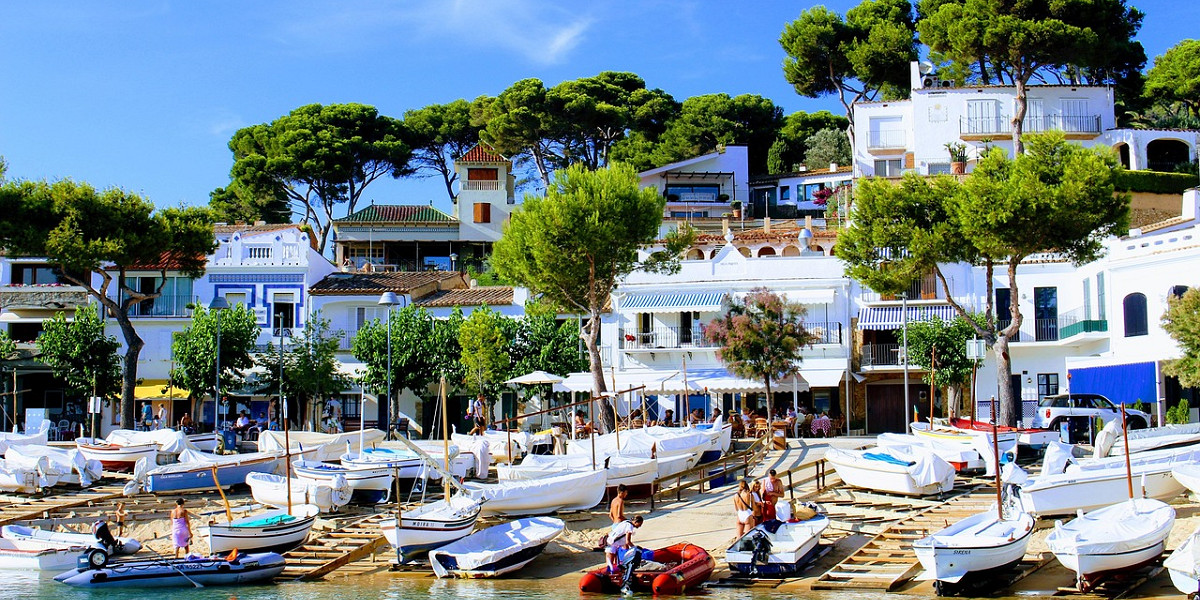The Costa Brava, located in northeastern Spain along the Mediterranean coast, is renowned for its golden beaches, rugged coves, and charming fishing villages. Moving to this region has become a popular choice for those seeking a mild climate, unspoiled landscapes, and authentic Catalan culture. Stretching from Blanes, known as the "Gateway to the Costa Brava," to the French border, this area blends history, natural beauty, and modern amenities.
Before relocating, consider these key advantages and challenges:
Pros:
1. Nature and Outdoor Activities: Pristine beaches, pine forests, hiking trails, and nature reserves offer endless opportunities for outdoor enthusiasts.
2. Rich Culture and Heritage: Medieval castles, museums (like the Dalí Theatre-Museum in Figueres), and festivals such as Girona’s "Temps de Flors" (Flower Festival).
3. Mild Mediterranean Climate: Warm summers (25–30°C) and mild winters (10–15°C) allow for year-round outdoor living.
Cons:
1. Language Barrier: While English is spoken in tourist areas, Catalan and Spanish dominate in rural towns.
2. Tourist Crowds: Popular spots like Lloret de Mar become overcrowded during peak summer months.
3. Property Prices: Premium coastal towns like Cadaqués or Begur command high real estate prices.
Best Towns to Live in Costa Brava
Each town along the Costa Brava offers its own unique charm:
1. Blanes
- Pros: Proximity to Barcelona (1 hour) and Girona (25 minutes), authentic Catalan vibe with local markets and tapas bars.
- Cons: Busy beaches in summer, though quieter coves like La Palomera remain peaceful.
Property Prices: Affordable options start at €2,500 per m².
2. Tossa de Mar
- Pros: Medieval castle, secluded snorkeling coves, and scenic pine forest hikes.
- Cons: Limited infrastructure for permanent residents.
Perfect For: History lovers and those seeking tranquility.
3. Lloret de Mar
- Pros: Vibrant nightlife (clubs along Avenida Just Marles), easy access to Girona and Barcelona airports.
- Cons: Overcrowded in summer.
Housing: Apartments for rent from €800/month; purchase prices from €2,500 per m².
4. Figueres
- Pros: Birthplace of Salvador Dalí, laid-back inland lifestyle, and 30-minute drive to the coast.
- Cons: No direct beach access.
Highlights: Quaint old town with brunch cafés and gourmet markets.
5. Girona
- Pros: International schools, thriving cultural scene, and historic landmarks like the Gothic cathedral.
Neighborhoods: Old Town (apartments) or Montjuïc (suburban villas).
Transport: 40 minutes to beaches; 1.5 hours to Barcelona.
Cost of Living in Costa Brava
Housing: Prices range from €2,300 to €6,700 per m². Premium areas like Cadaqués (€6,700/m²) and Begur (€3,000+/m²) contrast with budget-friendly towns like Blanes (€2,500/m²).
Dining: A casual meal costs €15–20, while a mid-range restaurant dinner averages €30–50. Local markets offer fresh produce (e.g., vegetables at €1.5–3/kg).
Utilities: €150–200/month for an apartment.
Is Costa Brava Good for Expats?
Families: Safe neighborhoods and international schools (e.g., The American School of Girona).
Retirees: High-quality healthcare and peaceful towns like Tossa de Mar.
Young Professionals: Nightlife in Lloret de Mar and cultural events in Girona.
For quieter living, consider inland villages like Palafrugell; for convenience, stay near coastal hubs.
The Costa Brava is ideal for those seeking a balanced lifestyle amid natural beauty, culture, and modern comforts. Whether you’re drawn to the serenity of Figueres, the energy of Lloret de Mar, or the historic allure of Girona, this region caters to families, retirees, and adventurers alike. Choose your town based on priorities—peace, convenience, or coastal charm—and embrace the Mediterranean dream.

